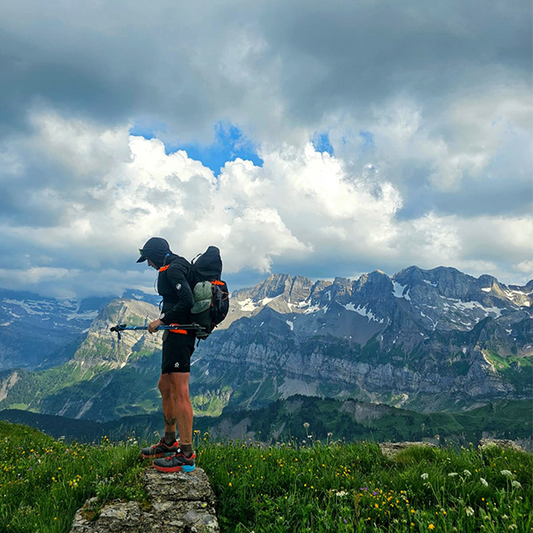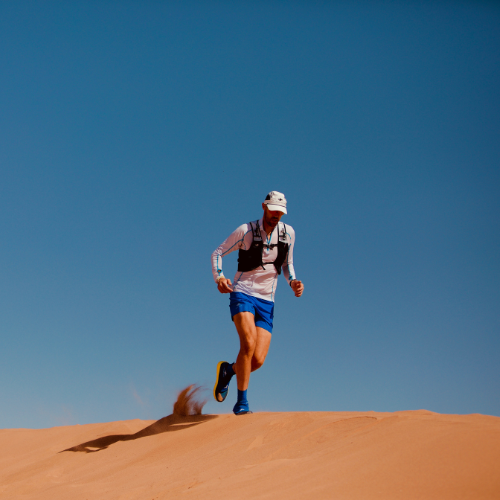On a long trail, your fuel is what you put in your stomach. Between climbs, technical descents, and hours of effort, eating properly during the race can make all the difference between crashing and reaching the finish line. But what should you eat? How often? Solid, liquid, sweet, salty? Here’s a complete guide to help you manage your nutrition during a long trail, whether you're heading out for 4, 6, or 12 hours of adventure.
1. Why nutrition is crucial in long trail running
During prolonged effort, your body:
- Depletes its glycogen stores (muscle fuel),
- Loses essential minerals (sodium, potassium, magnesium),
- Experiences slower digestion, especially under effort.
If you don’t anticipate this, you risk hitting the famous wall, running out of energy, or even dropping out. Hence the importance of a well-thought-out fueling strategy.
2. Continuous eating: the golden rule
Instead of planning "meals", get into the habit of regular snacking from the very first hour:
- Eat every 30 to 45 minutes,
- Alternate fast and slow carbs,
- Never wait until you're hungry or thirsty to act.
👉 Tip: set a discreet alarm on your watch to remind yourself to eat without thinking about it.
3. What to eat during a long trail?
✅ Essentials
- Energy bars: easy to chew, rich in carbs. Choose digestible ones that you've tested in training.
- Energy gels: packed with fast sugars, effective during low moments. Consume with water.
- Dried fruits (raisins, apricots, figs): natural source of sugars + fiber.
- Gingerbread, fruit jellies, fruit compotes: tasty and easy to digest.
- Salty snacks: mini ham sandwiches, cheese cubes, crackers. Great to break the monotony of sweet foods.
4. What to drink during a long trail?
Don’t rely solely on solid foods. Sports drinks help hydrate while providing:
- Carbohydrates,
- Sodium and other electrolytes,
- Digestive support.
Drink regularly: one to two sips every 10 to 15 minutes. Alternate between plain water and sports drinks if needed.
Check out our hydration tips for trail running by clicking here.
5. Adapt your nutrition to the conditions
- In hot weather: favor digestible and hydrating foods (compotes, fruits).
- In cold weather: go for salty, more appetizing foods, and fatty/slow-burning items for lasting energy.
6. Plan your aid station strategy
If you're participating in a race with aid stations:
- Check the race's official website: organizers often list what’s available at aid stations, especially if a nutrition partner is involved.
- Decide what you’ll carry yourself,
- Avoid trying unfamiliar foods on race day.
And above all, train your gut to eat while running. Digesting at 160 bpm takes practice.
Want to make your own aid station snacks? We share our best recipes here.
On a long trail, eating well is just as important as running well. Alternate sweet and salty, solid and liquid, and listen to your body throughout the race. Prepare your fueling plan just like your race strategy, and remember: every bite is one step closer to the finish line.











1 comment
Gracias, el año pasado corriendo una trail al km 90 mis piernas dejaron de correr, se griparon como el motor de un coche, menuda sensación pudo ser falta de alimento? Gracias